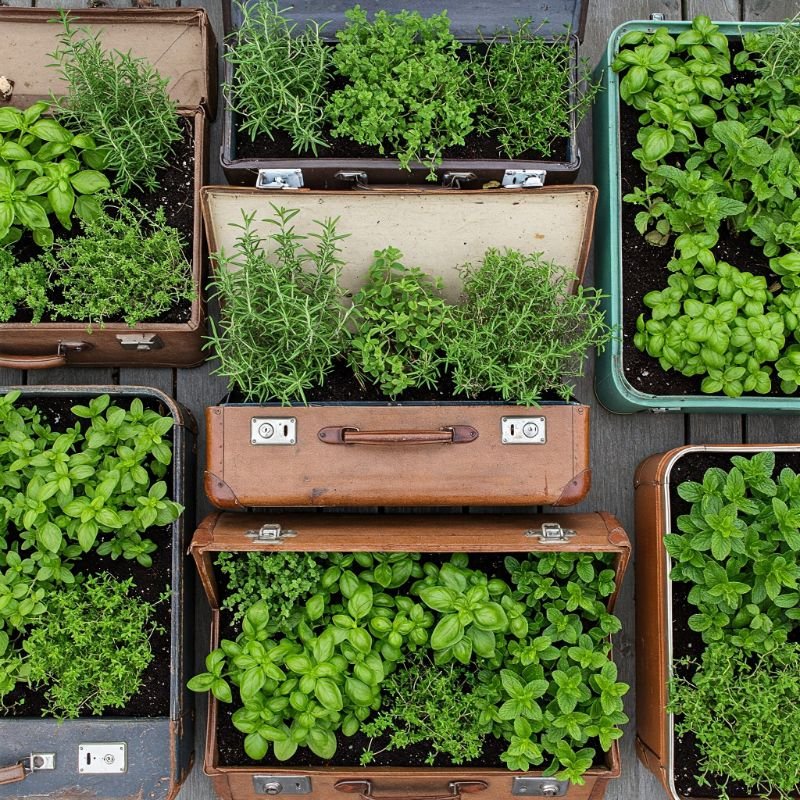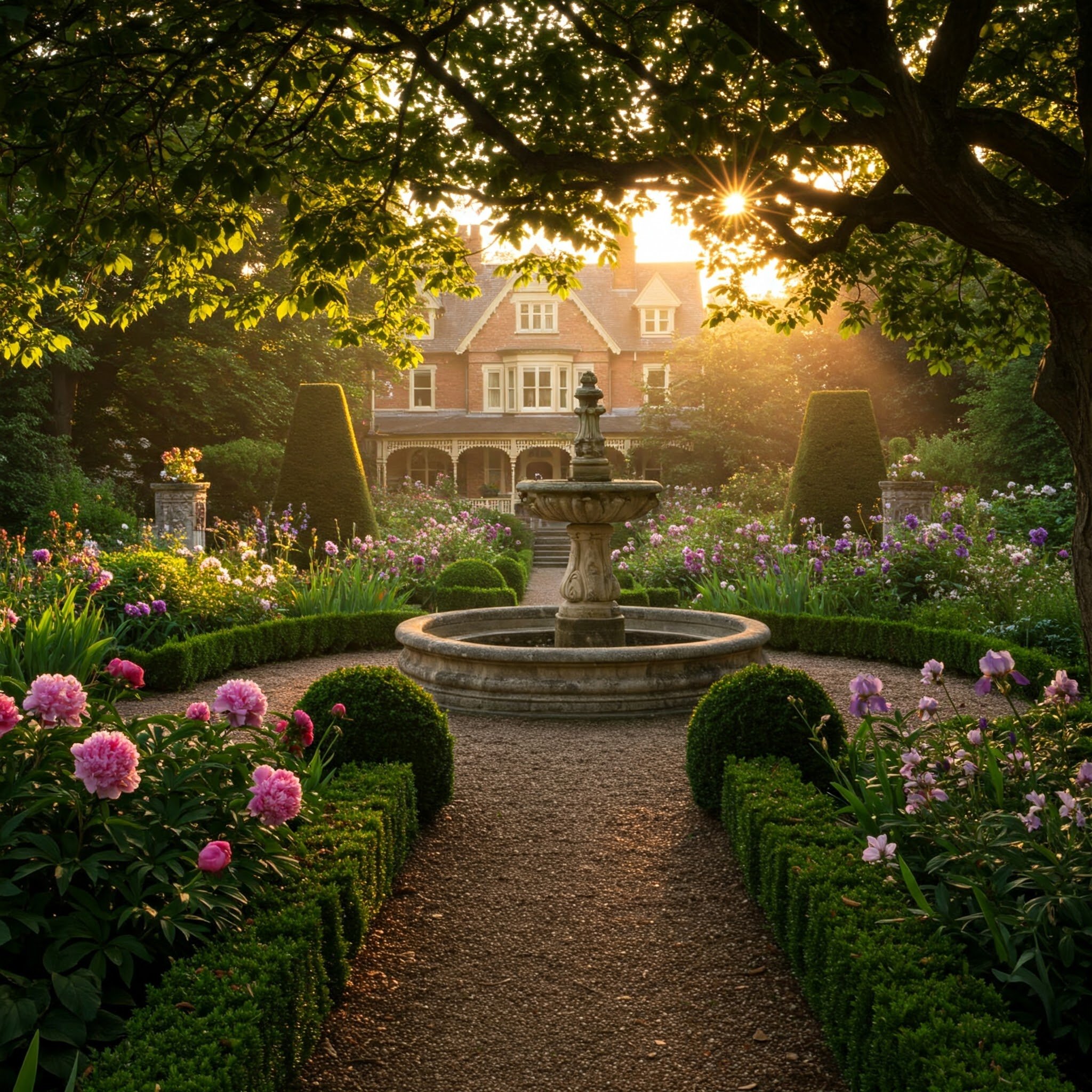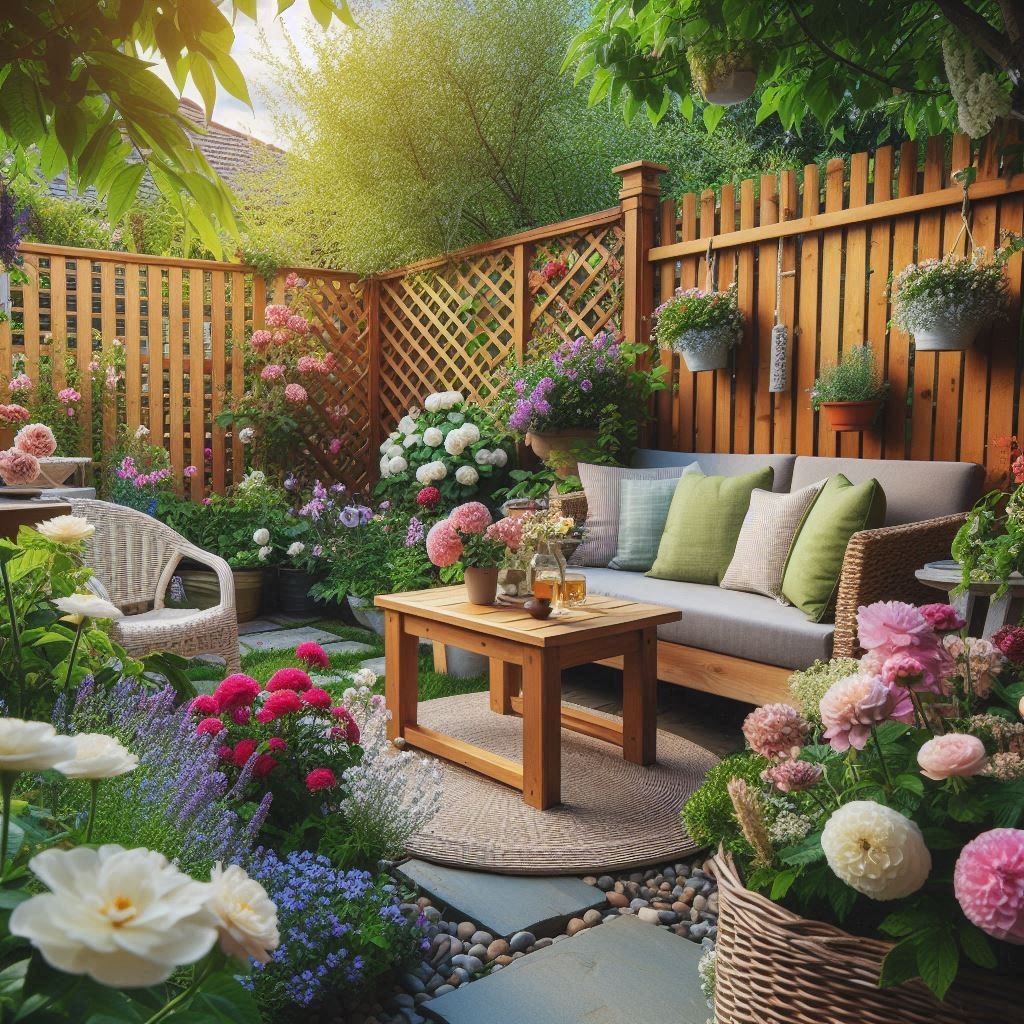15 Creative Container Garden Ideas to Try Now
Discover 15 innovative container garden ideas that blend style with sustainability. From upcycled treasures to themed plant collections, elevate your outdoor space regardless of size with these creative gardening approaches.
Have you ever stared at a concrete patio or tiny balcony and felt that gardening just wasn't in the cards for you? I certainly did, until container gardening unlocked a world of possibilities that transformed my limited urban space into a lush retreat that rivals any traditional garden. Container gardening liberates plants from the confines of conventional beds, allowing them to thrive in vessels of all shapes and sizes, in spaces both expansive and minimal. It democratizes gardening, making it accessible whether you tend a sprawling estate or a compact apartment windowsill. The beauty of container gardening lies not just in its practicality but in its boundless creative potential—each pot becomes a blank canvas, each arrangement a living sculpture that expresses your personal aesthetic while nurturing living things. These portable gardens adapt to changing conditions, travel when you do, and transform spaces that might otherwise remain barren concrete or empty corners. In this guide, I'll share 15 container garden ideas that pushed the boundaries of my own gardening practice and might just revolutionize yours—proving that with a bit of imagination, anything can become a home for plants. Ready to think outside the traditional pot? Let's dig in.
1. Vintage Suitcase Herb Gardens
Remember that weathered leather suitcase gathering dust in your attic? It's secretly yearning for a second life as a characterful herb garden! Vintage luggage pieces transform into stunning container gardens that merge nostalgic charm with practical cultivation. I repurposed my grandfather's old travel case by drilling drainage holes in the bottom, lining it with landscape fabric, and filling it with quality potting mix. The sectioned interior creates natural dividers for different herb varieties—basil and parsley in the deeper side, creeping thyme and oregano in the shallower compartments. The hinged lid provides built-in protection during harsh weather; simply close it during frost threats or scorching afternoons. When positioned on a rustic wooden stand, this traveling herb garden becomes a conversation piece that literally elevates homegrown flavors. The contrast between the case's journey-worn exterior and the vibrant green life sprouting within creates visual poetry that commercial planters simply can't match.
2. Floating Window Box Flower Displays
Transform ordinary windows into extraordinary garden features with floating window boxes that create the illusion of blooms suspended in mid-air. Unlike traditional window boxes that mount directly under sills, these containers attach with bracket systems that position them several inches away from your home's exterior, creating breathing space that benefits both plants and architecture. I installed mine using adjustable metal brackets that allow for seasonal repositioning—higher in summer to create shade, lower in spring to catch maximum sunlight. This arrangement opens possibilities for layered plantings; I've created cascading compositions with trailing nasturtiums and lobelia spilling downward while upright geraniums and salvias provide height. The visual effect from inside is particularly magical—flowers appear to float outside your window like a living painting that changes with the seasons. This approach works equally well for renters using tension rod systems that require no permanent mounting.
3. Vertical Pallet Container Gardens
Reimagine ordinary shipping pallets as extraordinary vertical growing spaces that transform blank walls into lush, living tapestries. These humble wooden structures—often available for free from local businesses—create multiple planting pockets while occupying minimal floor space, perfect for balconies, small patios, or narrow side yards. I transformed mine by thoroughly sanding rough edges, applying pet-safe exterior stain, and stapling landscape fabric to create plant-holding pockets between the slats. The vertical orientation creates natural microclimates—I plant moisture-loving ferns and impatiens in lower pockets where water naturally accumulates, while drought-tolerant succulents and herbs thrive in upper sections. The modular nature allows for seasonal replanting; I transition from spring flowers to fall ornamental cabbages without disrupting the entire display. Beyond aesthetics, these living walls provide excellent insulation, cooling buildings naturally while creating habitat for beneficial insects and birds—urban ecology in its most beautiful form.
4. Repurposed Rain Boot Plant Collections
Those outgrown children's rain boots or your own worn-out wellingtons deserve promotion from foot protection to garden conversation pieces! Rubber boots create whimsical, weather-resistant planters that bring playful personality to porches, entryways, or garden borders. I collected my family's colorful outgrown pairs, drilled drainage holes in the soles, and arranged them in a cheerful "walking" pattern across my patio edge. The boot shape provides excellent depth for root development while the narrow ankle portion creates natural support for trailing plants like sweet potato vine or bacopa. I particularly love pairing children's boot sizes with appropriately miniature plants—tiny succulents or fairy garden specimens—creating a delightful scale play that enchants visitors of all ages. The weatherproof rubber construction withstands elements brilliantly, often outlasting traditional terracotta in rainy climates. This approach transforms outgrown necessities into garden art while keeping perfectly good items from landfills.
5. Tiered Cake Stand Succulent Arrangements
Elevate your succulent collection from mere plants to living sculpture by repurposing vintage cake stands as multi-level miniature landscapes. These tiered structures—originally designed for displaying confectionery—create perfect graduated platforms for showcasing drought-tolerant plant collections in dimensional arrangements that draw the eye upward. I transformed a three-tier porcelain stand by filling each level with cactus mix, then arranging succulents in a gradient—larger rosette forms like Echeveria on the bottom tier, medium-sized Haworthia in the middle, and tiny Sedum varieties crowning the top. The vertical arrangement maximizes display space while creating natural microclimates; lower levels retain slightly more moisture while upper tiers receive better air circulation. The pedestal base elevates the entire arrangement to table height, creating a living centerpiece that evolves throughout the year as plants grow and change. This approach works beautifully indoors on bright windowsills or outdoors on protected patios.
6. Hanging Colander Herb Gardens
Transform kitchen workhorses into suspended herb gardens by repurposing metal colanders into brilliant hanging planters. These perforated cooking tools provide ideal growing conditions with their built-in drainage and airflow capabilities—qualities gardeners typically engineer into conventional containers. I rescued a collection of vintage aluminum colanders from thrift shops, threading durable cord through their handles to create balanced hanging mechanisms. The bowl shape creates perfect depth for culinary herbs like thyme, basil, and chives, while the countless tiny holes allow excellent root aeration while preventing waterlogging. I hung my herb collection near south-facing kitchen windows, creating not just convenient cooking access but a shimmering display as sunlight plays through the metallic surfaces and abundant foliage. The varying patterns of perforations in different colander styles create additional visual interest as light and shadow play across walls. This marriage of kitchen utility and garden function creates harmony that enhances both cooking and growing spaces.
7. Miniature Fairy Garden Containers
Unleash your imagination by creating miniature worlds within containers that merge horticulture with storytelling. Fairy gardens transform ordinary planters into enchanted landscapes where tiny plants become towering forests alongside diminutive architectural elements. I repurposed my grandmother's cracked birdbath into a magical scene using dwarf varieties like Irish moss for "lawns," miniature African violets for "flowering shrubs," and baby tears plants for "cascading vines." The shallow basin provides perfect depth for these small-rooted specimens while accommodating miniature furniture, pathway materials, and whimsical characters that create narrative. The true magic emerges as living plants intertwine with imaginative elements—thyme creeping over a tiny footbridge or succulents becoming abstract "trees" beside a fairy cottage. This approach particularly engages children, teaching plant care through storytelling while creating multigenerational gardening opportunities. These miniature masterpieces work equally well in spacious garden corners or compact apartment windowsills, proving that garden wonder requires imagination rather than expansive space.
8. Milk Crate Urban Vegetable Gardens
Revolutionize urban food production with modular milk crate gardens that maximize harvest while minimizing space requirements. These stackable plastic structures—often available for minimal cost from restaurant supply stores—create perfect compartments for vegetable growing with their consistent dimensions and built-in ventilation. I transformed a collection of black milk crates by lining them with landscape fabric, filling with quality vegetable soil mix, and arranging them in various configurations based on seasonal needs. The standardized size allows for infinite arrangement possibilities: vertical towers for vining plants like cucumbers, horizontal grids for greens and root vegetables, or staggered pyramids that create different sun exposure zones. The mobility proves particularly valuable in challenging urban environments; I've shifted entire gardens to follow seasonal sun patterns across my small patio. The modular nature allows for isolation of struggling plants without disturbing the entire garden system. This approach transforms even concrete balconies into productive vegetable plots that rival traditional raised beds.
9. Color-Themed Container Collections
Elevate container gardening from functional to artistic by creating chromatic garden stories through intentional color schemes. This approach treats plant selection as palette curation, transforming random container collections into cohesive visual compositions. I created a sunset-inspired arrangement on my west-facing balcony using terracotta pots exclusively planted with orange, red, and golden blooms—marigolds, nasturtiums, and calendula—that echo and amplify the evening light. The intentional restriction of color creates unexpected sophistication and visual impact that random multicolor arrangements simply can't achieve. Beyond flower color, consider foliage tints, container materials, and even soil covers as elements in your color story. This approach transforms with minimal effort; my summer azure collection of blue lobelia and delphinium in cobalt pots transitions to autumn by simply swapping in purple kale and silvery dusty miller. This technique proves particularly effective in smaller spaces where visual cohesion makes areas appear larger and more intentionally designed.
10. Upcycled Drawer Planter Boxes
Rescue abandoned furniture pieces from landfill destiny by transforming their drawers into characterful planting containers that merge history with horticulture. Vintage drawer units—damaged beyond functional repair but rich with patina and personality—create unique planting vessels with built-in depth perfect for root development. I salvaged a water-damaged dresser from a curb, removing its five drawers and reinforcing their bases with cedar planks before drilling drainage holes. The varying drawer sizes naturally accommodate different plant needs—deeper drawers for tomatoes and peppers, shallower ones for lettuce and herbs. The existing drawer pulls create built-in handles for mobility, while aged wood finishes provide aesthetic warmth that new containers require years to develop. I arranged mine in an asymmetrical cascade down my porch steps, creating dimensional interest while maximizing growing space. This approach honors craftsmanship from earlier eras while creating practical growing space with minimal environmental impact—sustainability and style in perfect harmony.
11. Rainfall Shower Head Hanging Gardens
Transform bathroom fixtures into botanical magic by repurposing rainfall shower heads as innovative hanging planters that create the illusion of perpetual green rainfall. These broad, flat fixtures—often replaced during bathroom renovations—create perfect frameworks for supporting cascading plants with their existing mounting hardware and water distribution design. I rescued several from a neighbor's remodel, painted them with outdoor-grade metallic finish, and replaced their water feed with nearly invisible fishing line for hanging. The flat, circular shape creates an ideal base for shallow-rooted cascading plants like string of pearls, burro's tail, or creeping thyme. I installed mine above outdoor seating areas where the trailing plants create living ceiling effects that filter sunlight into dappled patterns below. The industrial-meets-natural aesthetic appeals particularly in contemporary garden designs where unexpected material juxtaposition creates visual tension. This approach exemplifies creative repurposing, transforming single-purpose fixtures into dual-function garden features that prompt visitors to reconsider ordinary objects' potential.
12. Toolbox Succulent Displays
Honor traditional craftsmanship while creating distinctive plant displays by repurposing vintage toolboxes as rugged, characterful containers for succulent collections. These utilitarian carriers—especially wooden models with divided compartments or metal ones with rust patina—provide natural organization for showcasing different succulent varieties in unified displays. I transformed my grandfather's weathered carpenter's box by sealing interior wood with marine-grade polyurethane, drilling drainage in strategic locations, and filling compartments with fast-draining cactus mix. The sectioned interior creates perfect divisions for contrasting succulent textures and colors—spiky aloe beside ruffled echeveria, trailing burro's tail next to architectural agave. The carrying handle facilitates seasonal repositioning, allowing the collection to follow optimal sunlight patterns throughout the year. Beyond practicality, these containers honor connection to earlier generations and traditional trades through tangible objects that gain new purpose. The juxtaposition of rugged, utilitarian containers with the geometric perfection of succulents creates visual dialogue between human craft and natural precision.
13. Mobile Garden Cart Arrangements
Liberate your container garden from static positioning with wheeled carts that transform ordinary plantings into flexible, mobile landscapes capable of adapting to changing conditions or entertaining needs. Repurposed bar carts, microwave stands, or purpose-built garden trolleys create elevated growing platforms that combine mobility with architectural presence. I transformed a discarded metal serving cart with good bones but peeling finish, reinforcing its shelves, applying outdoor paint, and adding oversized quality casters for smooth movement across uneven surfaces. The multi-level design creates natural organization for varying plant heights—taller specimens on lower shelves, cascading varieties above. The mobility transforms gardening practice; I wheel heat-sensitive plants into afternoon shade, position fragrant varieties near seating areas during entertainment, and relocate entire seasonal displays as needs change. The elevated height reduces back strain during maintenance while bringing plants closer to eye level for appreciation. This approach particularly benefits renters who may need to relocate collections quickly or those dealing with challenging conditions requiring frequent plant repositioning.
14. Edible Landscape Container Combinations
Revolutionize traditional container aesthetics by creating edible landscape combinations that produce food while rivaling ornamental arrangements in visual appeal. This approach rejects the artificial separation between "pretty" and "productive" plants, instead creating beautiful compositions where everything contributes to both harvest and aesthetics. I've replaced traditional container "recipes" (thriller, filler, spiller) with edible alternatives—vertical purple basil provides height and drama, compact strawberries create mid-level mass, while trailing nasturtiums cascade over edges with their edible flowers. The key lies in selecting varieties with inherent ornamental value—purple cauliflower instead of green, frilly red-veined sorrel rather than plain lettuce, tricolor sage in place of ordinary herbs. I position these edible masterpieces prominently on front porches and entertainment areas where their beauty can be appreciated while their proximity encourages harvest during daily activities. Beyond practicality, these arrangements start meaningful conversations about food sources and sustainability while demonstrating that productivity needn't sacrifice beauty.
15. Drink Dispenser Terrarium Gardens
Transform glass beverage dispensers into stunning self-contained ecosystems that merge container gardening with terrarium science. These large glass vessels—designed for serving drinks at gatherings—create perfect environments for moisture-loving plants with their exceptional transparency and manageable access through wide dispensing openings. I repurposed a 2-gallon model by creating a foundation layer of activated charcoal and pebbles, adding quality terrarium soil, and introducing woodland specimens like ferns, moss, and miniature African violets. The spigot opening allows for precise moisture management without disturbing the arrangement, while the sealed environment creates ideal humidity levels for these moisture-loving plants. The transparent walls reveal normally hidden root systems and soil layers, transforming plant science into visual art while allowing observation of the water cycle in miniature form. I display mine on kitchen counters where changing light throughout the day creates dynamic shadow patterns through the glass and foliage. This approach satisfies scientific curiosity alongside aesthetic appreciation—gardening that engages both mind and eye.
Conclusion
Container gardening transcends mere plant cultivation—it's creative expression, problem-solving, and sustainability merged into living art. These 15 ideas demonstrate the endless possibilities when we free ourselves from conventional garden thinking. Whether you're repurposing vintage treasures, maximizing limited urban space, or creating mobile plant collections, container gardening adapts to your unique circumstances while connecting you to the natural world. The most successful container gardens reflect personal vision rather than rigid rules. As you experiment with these approaches, you'll develop your own signature style that transforms ordinary spaces into extraordinary green retreats that nourish both plants and people.
Read next: 15 Perennial Garden Ideas for Year-Round Beauty
Frequently Asked Questions
1. What's the most important factor for container garden success?
Quality potting mix designed for containers—never use garden soil, which compacts and drains poorly.
2. How often should I water my container gardens?
Check moisture levels daily, especially in hot weather—containers dry faster than in-ground gardens.
3. Can I grow vegetables in containers without a yard?
Absolutely! Choose compact varieties labeled for containers and ensure adequate light and consistent water.
4. What containers work best for herbs?
Any container with drainage holes—shallow options work for mint and thyme, deeper ones for basil and parsley.
5. How do I manage container gardens in winter?
Insulate roots with bubble wrap, move containers against buildings, or relocate tender plants indoors.




































